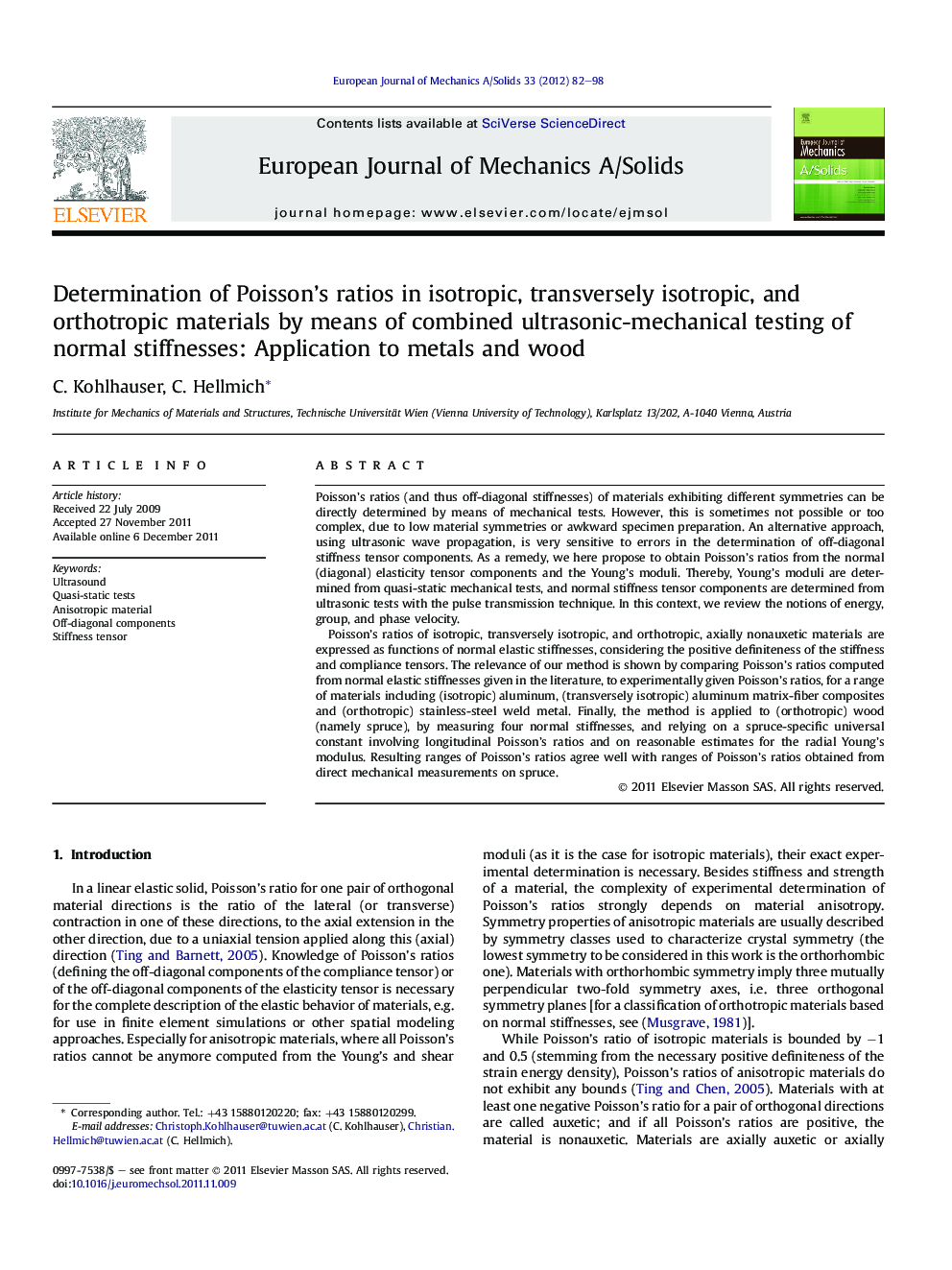| کد مقاله | کد نشریه | سال انتشار | مقاله انگلیسی | نسخه تمام متن |
|---|---|---|---|---|
| 774852 | 1463214 | 2012 | 17 صفحه PDF | دانلود رایگان |

Poisson’s ratios (and thus off-diagonal stiffnesses) of materials exhibiting different symmetries can be directly determined by means of mechanical tests. However, this is sometimes not possible or too complex, due to low material symmetries or awkward specimen preparation. An alternative approach, using ultrasonic wave propagation, is very sensitive to errors in the determination of off-diagonal stiffness tensor components. As a remedy, we here propose to obtain Poisson’s ratios from the normal (diagonal) elasticity tensor components and the Young’s moduli. Thereby, Young’s moduli are determined from quasi-static mechanical tests, and normal stiffness tensor components are determined from ultrasonic tests with the pulse transmission technique. In this context, we review the notions of energy, group, and phase velocity.Poisson’s ratios of isotropic, transversely isotropic, and orthotropic, axially nonauxetic materials are expressed as functions of normal elastic stiffnesses, considering the positive definiteness of the stiffness and compliance tensors. The relevance of our method is shown by comparing Poisson’s ratios computed from normal elastic stiffnesses given in the literature, to experimentally given Poisson’s ratios, for a range of materials including (isotropic) aluminum, (transversely isotropic) aluminum matrix-fiber composites and (orthotropic) stainless-steel weld metal. Finally, the method is applied to (orthotropic) wood (namely spruce), by measuring four normal stiffnesses, and relying on a spruce-specific universal constant involving longitudinal Poisson’s ratios and on reasonable estimates for the radial Young’s modulus. Resulting ranges of Poisson’s ratios agree well with ranges of Poisson’s ratios obtained from direct mechanical measurements on spruce.
► Poisson’s ratios are derived from combined ultrasonic-mechanical testing.
► Axial strain and longitudinal wave velocity are reliably measurable input data.
► Validation for isotropic, transversely isotropic, and orthotropic metals, and wood.
Journal: European Journal of Mechanics - A/Solids - Volume 33, May–June 2012, Pages 82–98